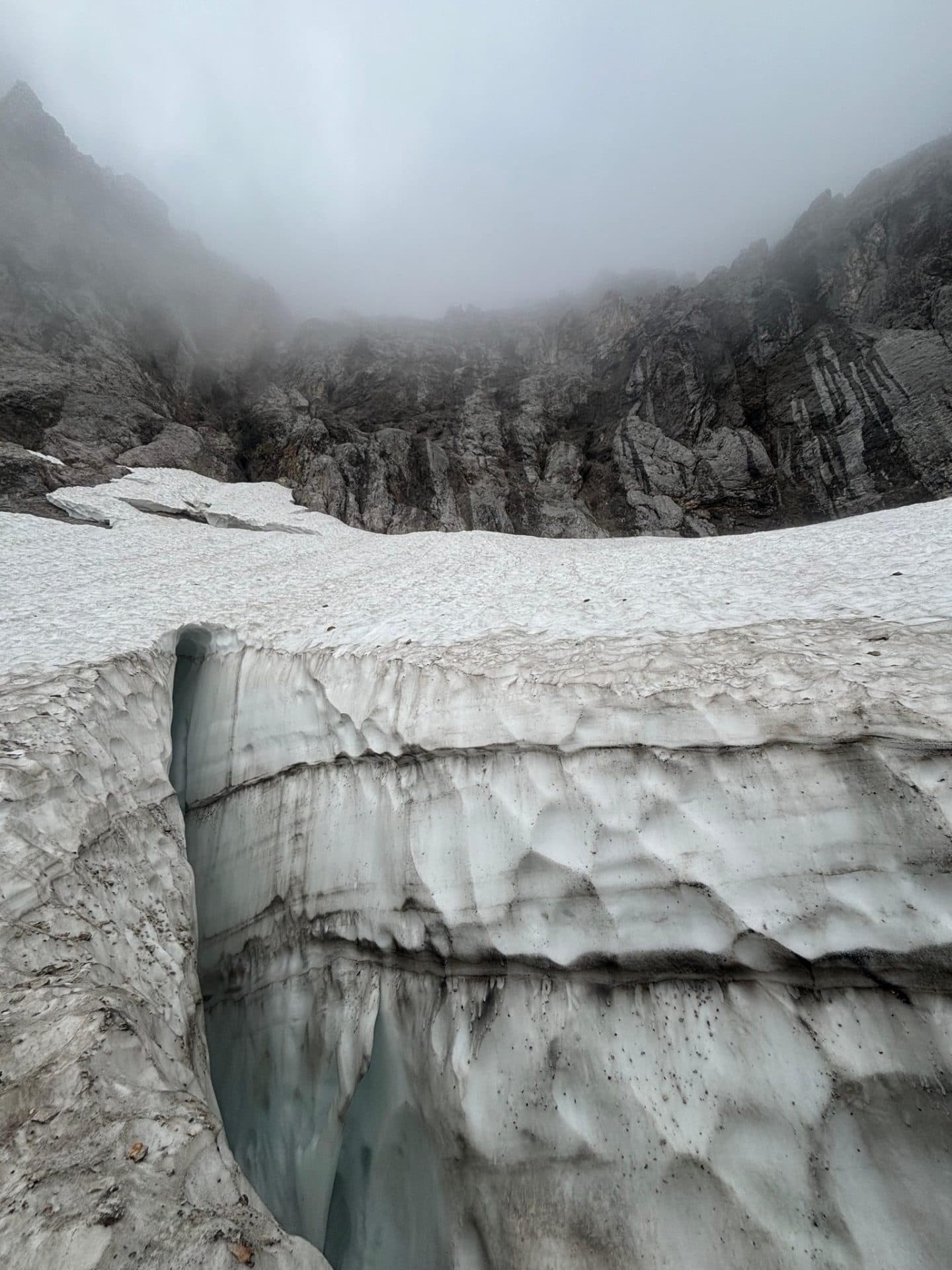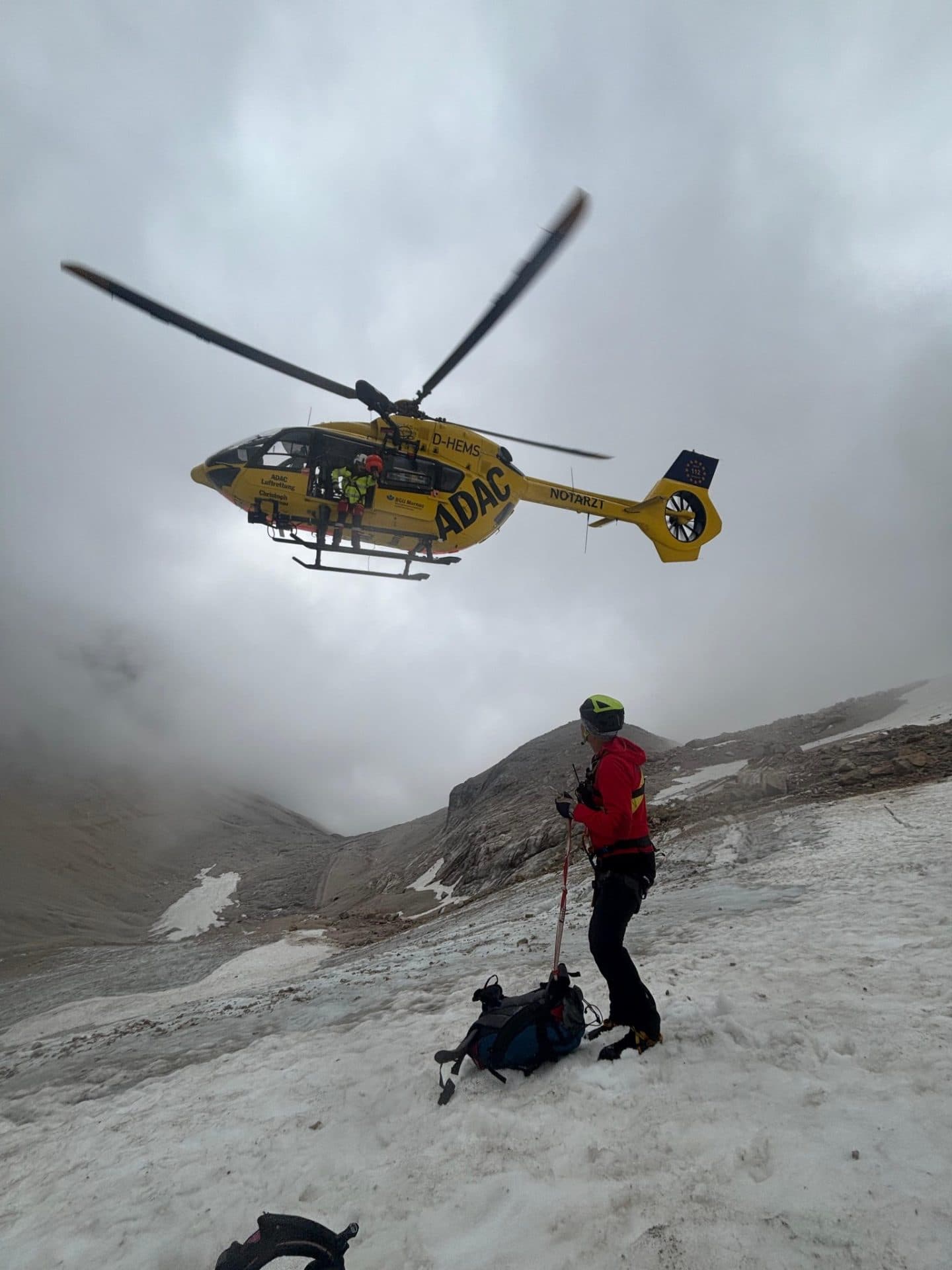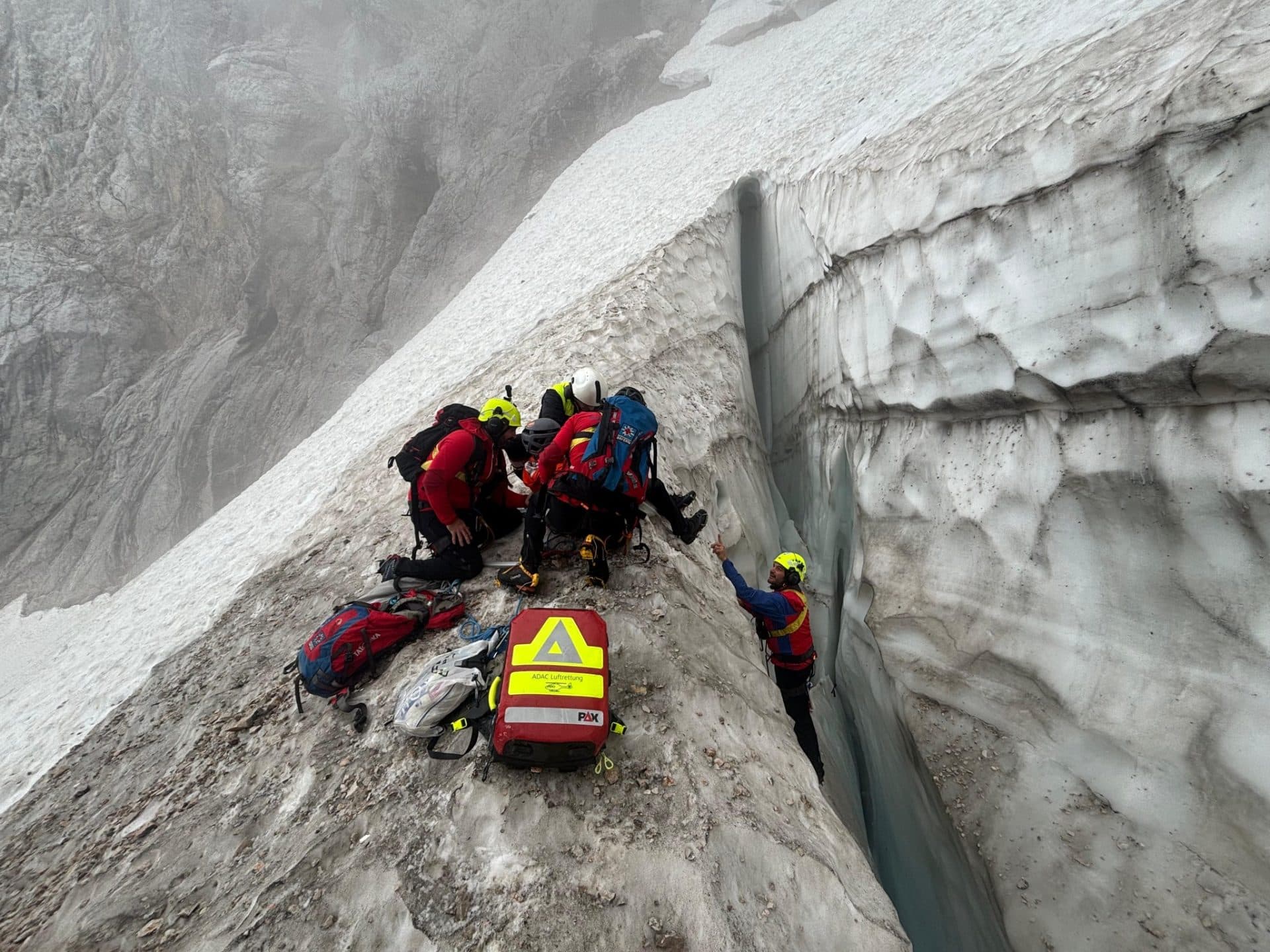
© Bergwacht Grainau
Climber's Narrow Escape from Zugspitze Crevasse Highlights Glacier Risks
Published Date:
Lucky Break Saves Climber from Icy Demise on Zugspitze
A solo mountaineer's ill-fated attempt to scale Germany's highest peak nearly ended in tragedy last Friday, when he plunged headfirst into a glacier crevasse on the Zugspitze. The incident has sparked renewed debate about the wisdom of tackling increasingly unstable alpine routes without proper safeguards or companions.
While the climber ultimately survived thanks to a fortuitous witness and a nail-biting rescue operation, the close call serves as a sobering reminder of the heightened risks facing even experienced mountaineers as climate change wreaks havoc on once-predictable alpine environments.

The drama unfolded on the Höllentalferner glacier, part of a challenging ascent route on the Zugspitze's northeast face. Around 2:30 pm, a bystander spotted the climber vanish into a crevasse and promptly alerted emergency services - a stroke of luck that likely saved the man's life.
Rescue efforts were hampered by deteriorating weather conditions, forcing teams to work within narrow windows of visibility. Helicopter crews from the ADAC and Grainau Mountain Rescue eventually located the climber wedged 10 meters deep in the crevasse, dangerously hypothermic and losing consciousness.
Facing a race against encroaching fog, rescuers opted for a high-risk 'crash rescue' extraction. Using ropes and a pulley system, they managed to haul the injured climber to safety mere moments before clouds engulfed the mountain, potentially scuttling any further attempts.
The four-hour ordeal involved 11 rescue personnel and multiple helicopter flights threading through treacherous weather. While the climber was successfully evacuated to hospital, the incident highlights the precarious nature of alpine rescues in an era of increasingly unpredictable conditions.

This near-miss on the Zugspitze is symptomatic of broader challenges facing the alpine climbing community. Climate change is rapidly altering high-altitude environments, with shrinking glaciers and unstable ice formations creating new hazards even on well-trodden routes.
The Höllentalferner itself is one of Germany's few remaining glaciers, its surface increasingly fractured and unpredictable due to accelerated melting. What was once a relatively straightforward glacier crossing is now a minefield of shifting crevasses and unstable ice bridges.
While experienced climbers have always faced risks in the mountains, the pace of environmental change is outstripping traditional risk assessment methods. Routes that were considered safe a decade ago may now harbor hidden dangers that even seasoned mountaineers struggle to anticipate.
As alpine environments continue to transform, the climbing community will need to reassess long-held practices around solo ascents and minimal safety gear. Increased reliance on local guides, more conservative route planning, and enhanced rescue capabilities may become necessary to prevent future tragedies.
Ultimately, this Zugspitze incident serves as a stark warning: in an era of climate instability, even Germany's most iconic peaks are becoming increasingly treacherous playgrounds for the unprepared.




